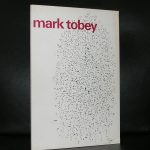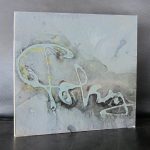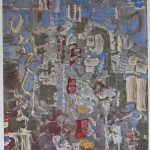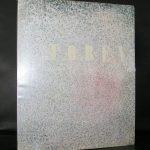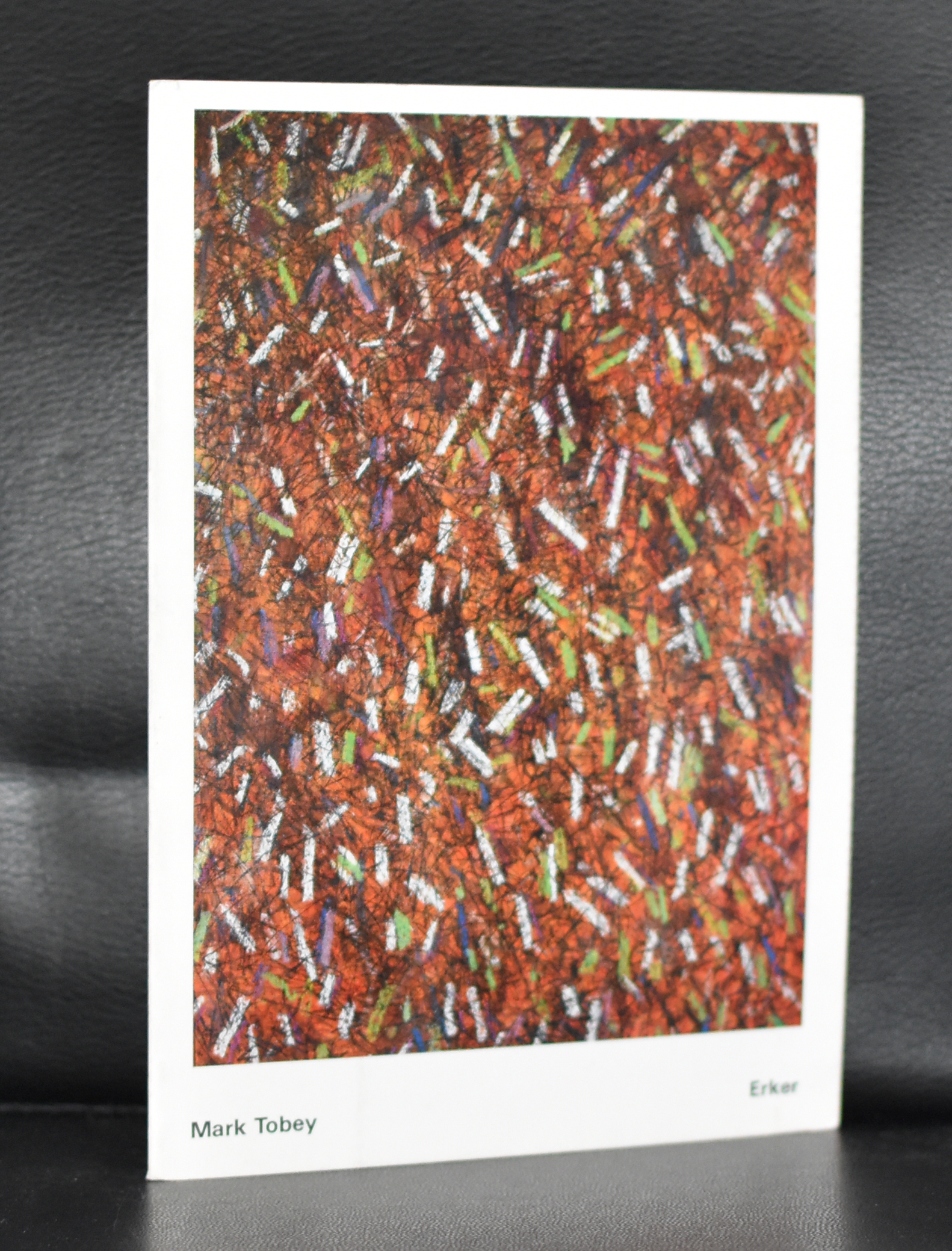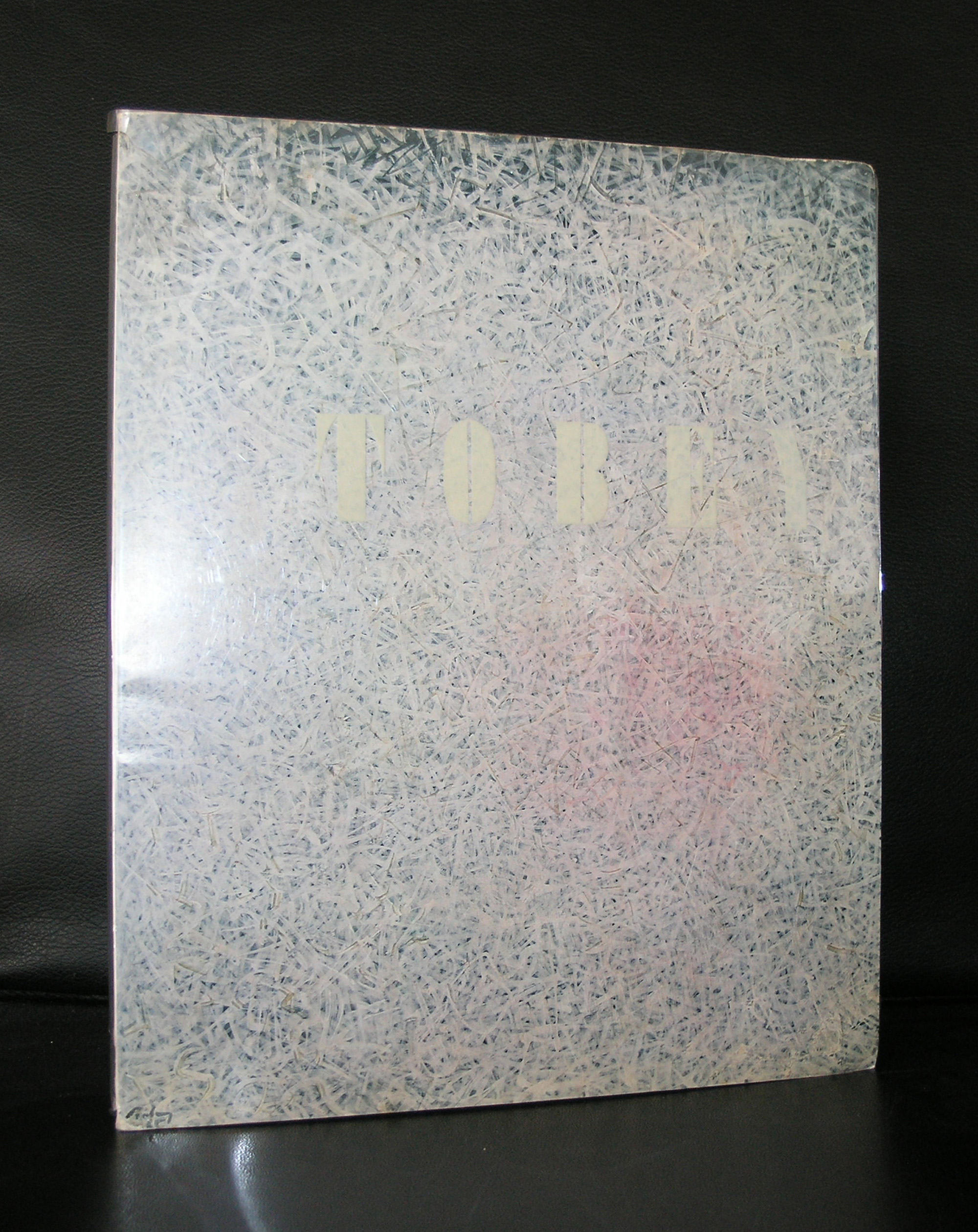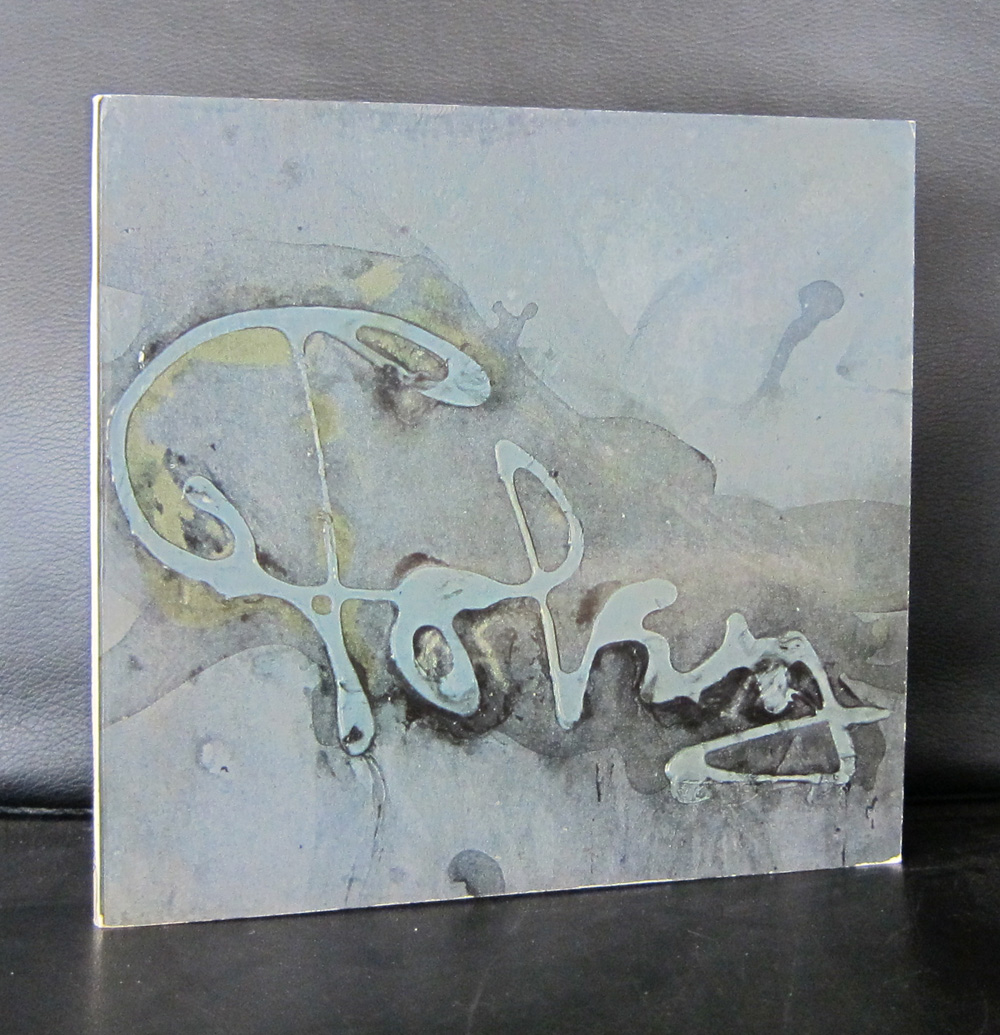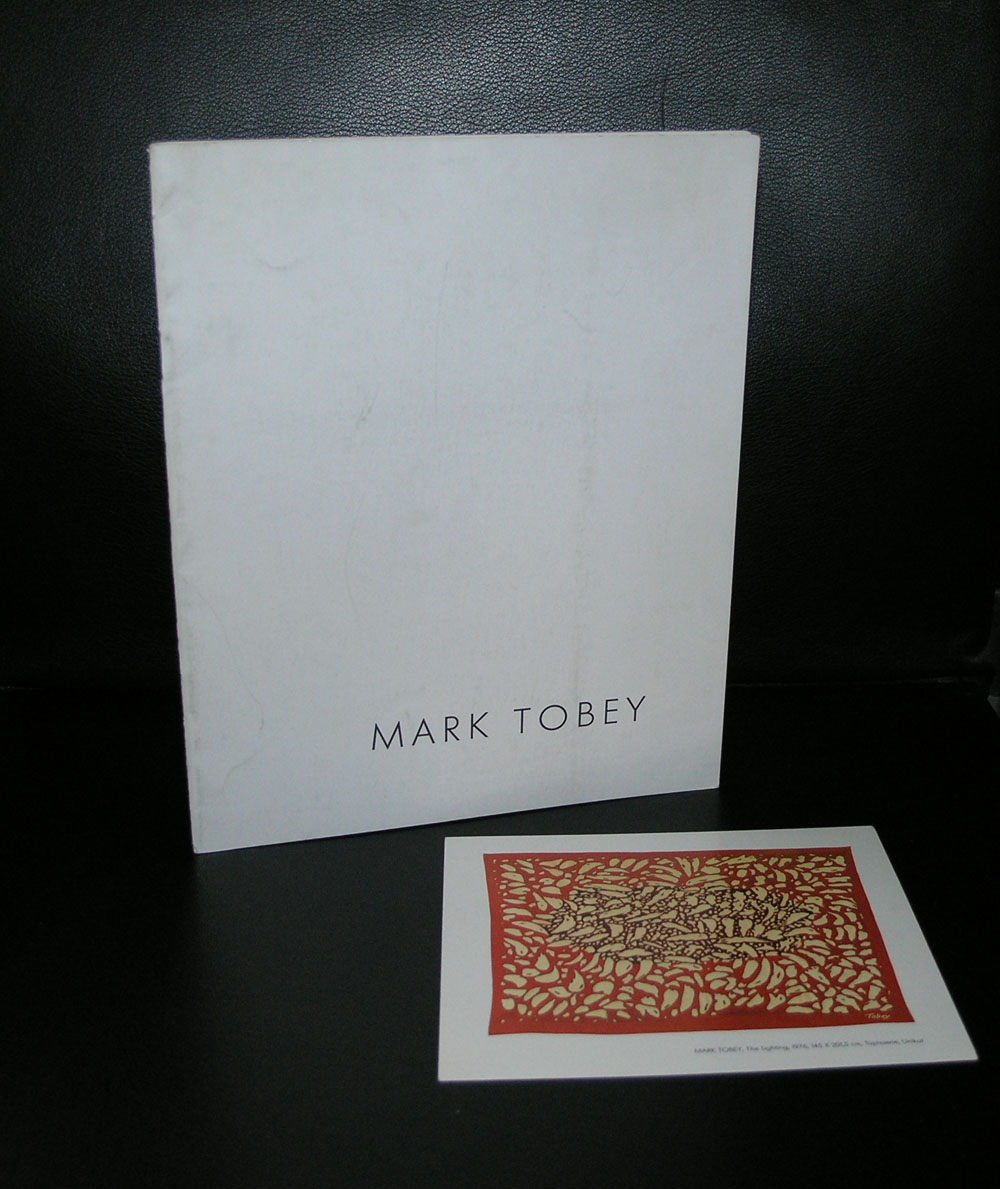
At one point in time, Tobey was an unfamiliar name to me, until I laid eyes on his large-scale works at both the Beyeler and Stedelijk Museums. It was then that I became an ardent admirer.
My journey with Tobey began with a catalogue I acquired two decades ago. Initially drawn to the Wim Crouwel design, I was immediately captivated by Tobey’s pieces within it.
Tobey is renowned for his creation of “white writing” – the superimposition of white or light-colored calligraphic symbols on an abstract background which is itself composed of thousands of intricate brush strokes. This technique, in turn, inspired the popular “all-over” painting style, made famous by Jackson Pollock, another American artist to whom Tobey is often compared.
While Tobey worked on pieces of varying sizes, I find his large works to be the most impressive. For the last 16 years of his life, he resided in Basel, which explains why many of his works still remain there. However, he was also an avid traveler, visiting Mexico, Europe, Palestine, Israel, Turkey, Lebanon, China, and Japan, spreading his art organically across the globe. Despite his travels, the majority of his body of work remains in Switzerland, where he lived for 16 years.
His pieces can be found in prestigious collections, such as the Smithsonian American Art Museum, Tate Gallery in London, Museum of Modern Art in New York City, Metropolitan Museum of Art, and the Whitney Museum of American Art. Several posthumous exhibitions have been dedicated to Tobey’s work, including those at the National Gallery of Art in Washington, D.C., USA, 1984; Museum Folkwang in Essen, Germany, 1989; Galerie Beyeler in Basel, Switzerland, 1990; and Museo Nacional Centro de Arte Reina Sofía.
www.ftn-books.com has several Tobey titles available.





